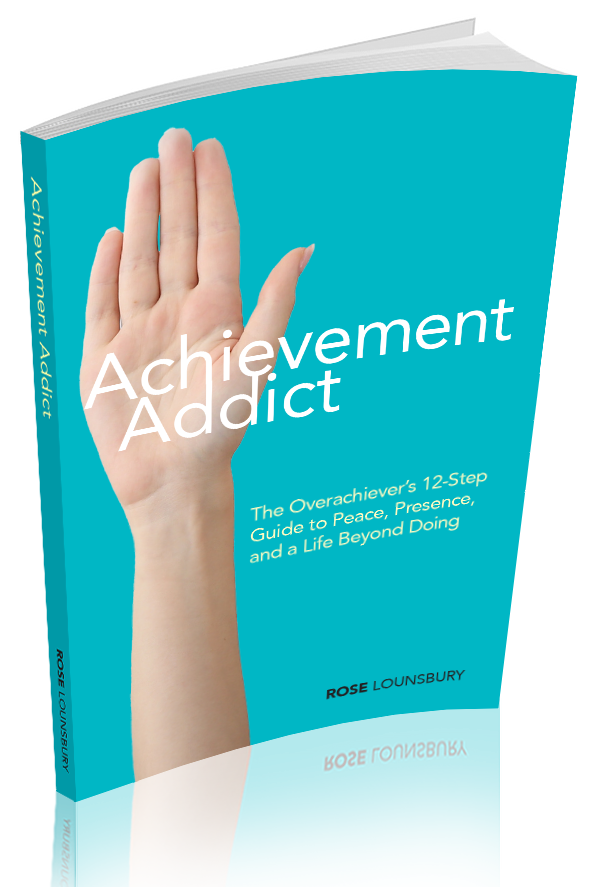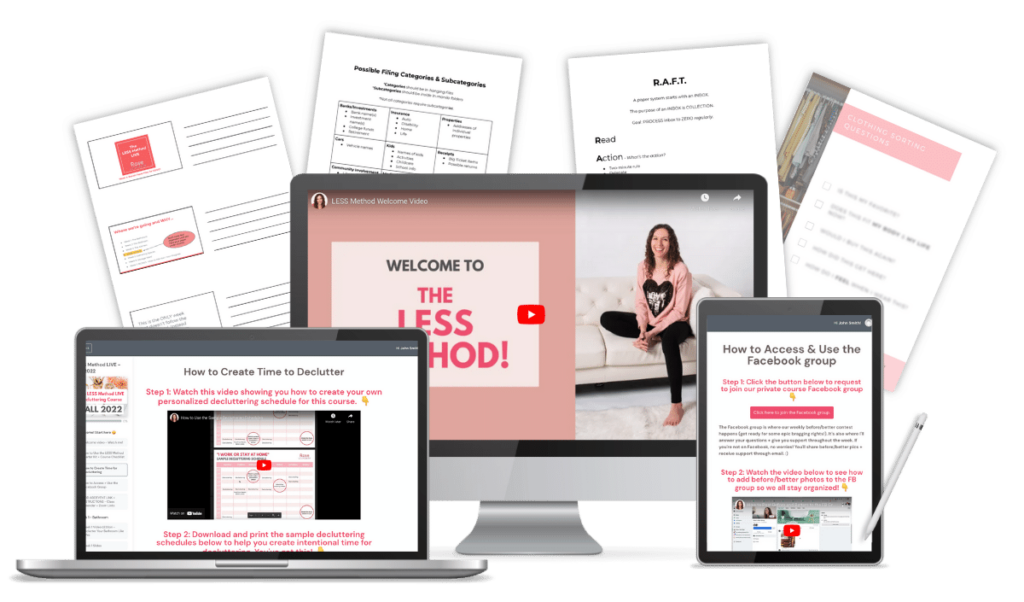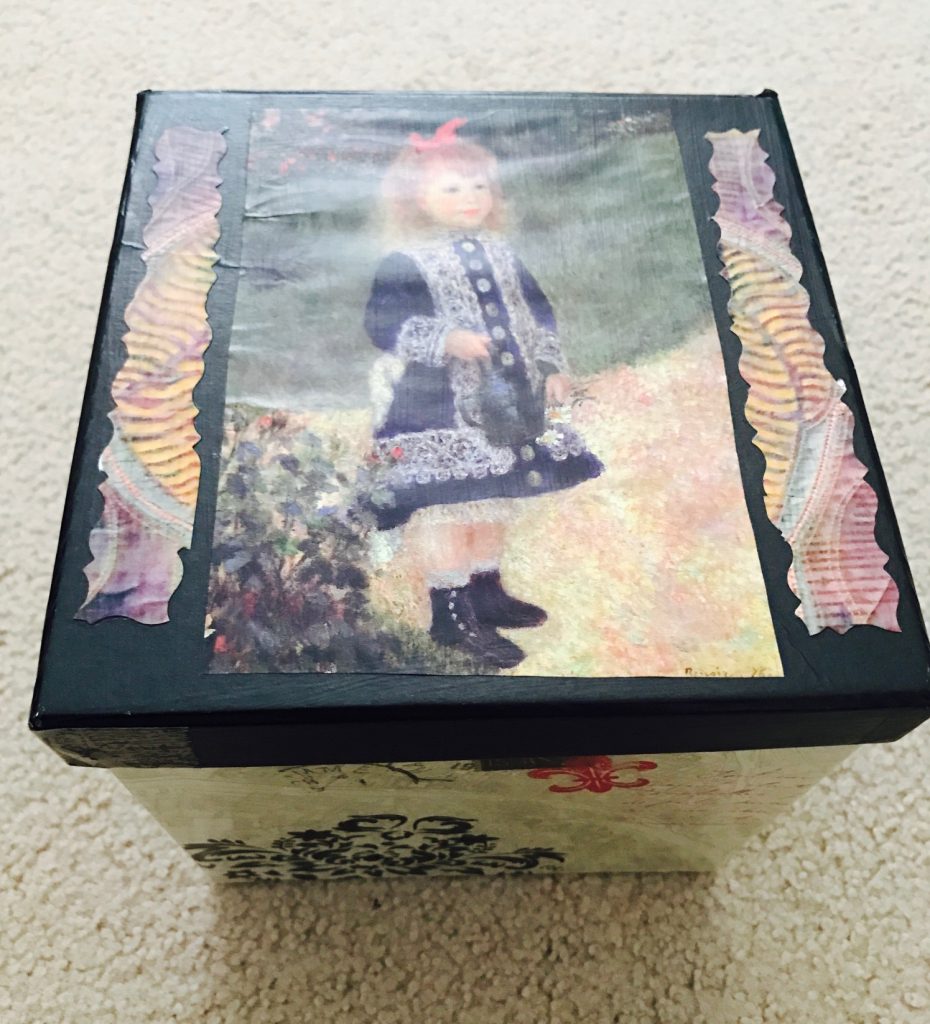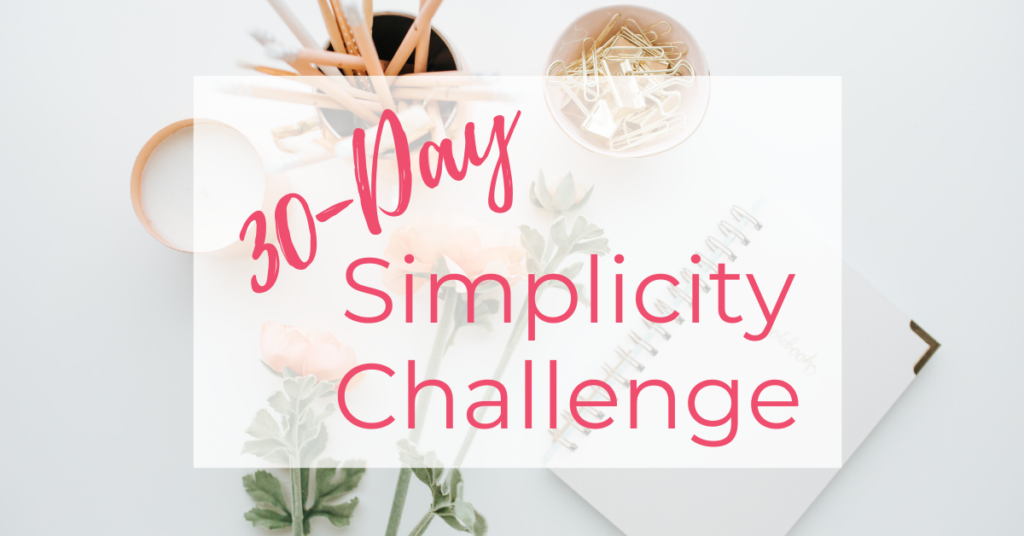All parents know that clutter inevitably comes with children, but I am always surprised that–as my kids grow–I need to continually adapt my clutter-control strategies. There really is no “one and done” solution to kid clutter, but I have learned some things that will hopefully help you better manage all the stuff that comes along with your beautiful little people. Today I’m tackling a big one: the random “special stuff” that shows up in kids’ rooms.
I divide the stuff I find in kids’ rooms into three basic categories:
- Items to Display
- Items in a Category
- Special Stuff
Allow me to expound.
Items to Display. These include things like soccer trophies, special artwork or photos, and awesome Lego creations.

It’s important that kids have a designated area for display items. A bookshelf or top of a cube organizer work just fine. If you’re feeling handy, you can also install shelves on the wall.
Items in a Category. These are like-with-like items and should be contained together: stuffed animals with stuffed animals, Barbies with Barbies, socks with socks, you get the idea. Items in a Category should make up the majority of items in a kid’s room (or any room, for that matter).

Special Stuff: This is the trickiest category and one that I fought for a loooooong time. It’s basically the miscellaneous stuff that kids hold onto that doesn’t need to be displayed but also doesn’t fit into a category. It’s the whistle they earned from the prize box at school, the stress ball they made out of a balloon and some flour, the random rock they picked up outside the grocery store and are unwilling to return to nature. If you’re a parent, you know this stuff. And you know that it can very easily take over a kid’s room and clutter every visible surface.
I used to think, “Why do kids need this miscellaneous stuff?? Just toss it!” But try telling that to a 5-year-old who believes the stuffed animal party hats she made from ice cream cone wrappers are a national treasure and believe me, you will discover this is a fight you don’t want to fight.

Special stuff is also tricky because it makes it difficult for kids to follow the “Clean your room” parental command. They truly don’t know where these items should go, so they end up all over the dresser or shoved under the bed.
I’ve found the best way to deal with special stuff–like any item–is to give it a home. A pretty box or bin works well.

You can even label it.

Now before you head to your child’s room and start tossing all the random stuff into boxes, let me give you a few caveats:
- Limit special stuff to one box: More than that and you just have neatly boxed clutter, which doesn’t teach your child to be organized. Also, remember this is special stuff. If you have too much of anything (whether it be wrenches, sweaters, or salt shakers) nothing is valued. Specialness is lost when there is too much. We teach our kids to value items by limiting the number of items they have.
- Talk to your kids about what happens when the box is full. That’s right… it needs to be decluttered, just like anything else. My daughter has a larger amount of special stuff than her brothers, and we go through her special stuff box every few months. She chooses some items to donate (Parental confession: I let her believe her special stuff is donated although most of it ends up in the trash. I’m trying to instill decluttering habits, not awaken her to the harsh realities of the end-of-the-line for a homemade bead bracelet.)
I hope this post gives you a practical tool you can use to help your kids keep their rooms neat and tidy. (And hey, feel free to make a special stuff box for yourself while you’re at it!)
Rose Lounsbury is one of Dayton, Ohio’s top professional organizers and a sought-after public speaker. After blogging about her own journey toward a minimalist lifestyle, Rose was inspired to start Less LLC, a minimalist-minded professional organizing company. Rose is a member of the National Association of Professional Organizers and has been featured on Good Day Columbus. If you’d like Rose’s help with an organizing project at your home or office, you can contact her at [email protected] or visit her online at OrganizeWithLess.com.










